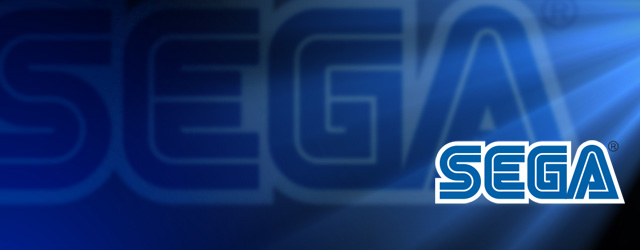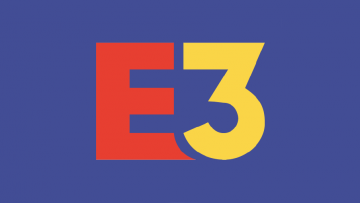
E3 2000: Overall Sega Booth Impressions
Now that it’s really over, we can take a look back and remember the greatness of Sega’s area. SegaWeb did just that:
You know one easy way to know who’s got the hottest presentation at E3? How many people are hanging around on Day Two. In one hundred different ways, Sega has shamed their main competitors (side by side by side in the main convention hall) Sony and Nintendo.
Both Nintendo and Sony are featuring very open booth designs. Though providing a wealth of space, both floorplans are wide open and before you knew it, you’ve walked right out of the area and towards competitors. Sony did have a huge presentation screen dead center in the main hall with a cool tunnel leading into a demo film theater, but that hardly made up for the otherwise boring design of scattered gaming stations.
Nintendo’s booth was a complete joke. About a quarter of their floor space was taken up by two pseudo-shop areas which didn’t seem to really have a true purpose other than to point out the fact that they do indeed publish videogames. (Ed Note: Nintendo publishes videogames? Woah, I forgot about all that! >:) )
Most of their representatives had no clue as to product information. This was in stark contrast to the Sega booth where almost every Sega representative was able to hold conversations regarding products and information beyond the press releases.
The Sega booth was a production worthy of Hollywood in the best sense. At the main booth entrance, we were led through a “decontamination chamber” and a tunnel of binary code complete with voice overs of gamers locked in conversation (including the charming phrase, “Yeah, bitch!”). Lastly, a wall of video screens to either side flashed through a quick series of Sega’s premier titles.
Sega kept the energy going thanks to a DJ and a massive stage featuring constant events that drew attendees in droves. The music was pumping at a constant loud volume which helped to keep us sleep-deprived journalists attentive. DJs took shifts, spinning mostly drum n bass from a perch above the crowd. At one point, Mixmaster Mike of Beastie Boys and Invisible Skratch Pickles fame even took over the turntables for a short but sweet performance.
The stage was a big draw, with a set rotation ranging from game contests displayed on perhaps the world’s largest television screen to dance performances. Among the performances were Space Channel 5 which featured Ulala and a cast of about ten, dancing in-sync to a great mix of music against the backdrop displaying synced video images from the game. This performance took place a few times each day and always drew a crowd and grabbed the attention of all in the area.
Also of note was the Jet Grind Radio performance featuring in-line skaters performing tricks including rail grinds on stage against game footage and soundtrack music at full volume. This could have all been very hokey but was pulled off with great skill by all involved.
A walkway above the crowd wrapped around one side of the booth connecting down to the stage via a firehouse pole. The walkway led to the Jet Grind Radio game terminal section and while you played, fresh graffiti tags were applied to the wall above you. Also above the Space Channel 5 section, four platforms were cut out from the wall where go-go dancers would come and perform periodically.
The stage also included game contests and demonstrations as well as announcments from open to close each day. “Game Pods” as they were called by Sega announcers, were packed everywhere, broken into seperate sections. Dedicated sections include the aforementioned Jet Grind Radio and Space Channel 5 as well as Shenmue, a Sega Coin-op section (with free play, no less), a Sega Sports section, and a SegaNet section.
The SegaNet section wrapped behind the stage and took up a large portion of Sega’s booth space. This was a very, very well done area featuring linked terminals offering Quake III Arena play using the Japanese Dreamcast mouse, the regular controller, and the Mad Catz Panther DC peripheral. Also linked up was a network for Sega Sports NFL 2K1. May of Sega’s fine online titles were featured such as NBA 2K1, Armada 2, 4×4 Evolution, and many more.
Also in the SegaNet area were representatives for Heat.net, in addition to representatives displaying a voice over Internet service and Sega’s first broadband peripheral [see our seperate in-depth coverage on the main page].
The Sega Sports area had multiple terminals for World Series Baseball 2K1, NBA 2K1, and NFL 2K1 (in addition to the linked terminals in the SegaNet area for the latter two titles). Alas, NHL 2K1 was not present in any form, but a seperate sports area featured additional third-party sports titles as well as Sega’s Virtual Tennis which was quite lovely.
We overheard many excited attendees praises for Sega’s presentations and Sega elicited quite a few rounds of cheer from an otherwise sedate and “been there, done that” crowd. Everyone under the age of 35 made it through this booth at one point or another and many called Sega’s area home. We spent one entire day there and feel compelled to return for a few more rounds at Jet Grind, SC5, ad the Shenmue terminals (broken down into seperate QTE, Free Battle, and mini-game terminals as with TGS shows prior).
Top notch work by Sega and a good sign of where the future of mainstream videogame entertainment lies (at least with the hip among us). Nowhere at the show was this much constant attention paid to one exhibitor. Sega did us proud.


![Private: [ID: L0xZlaDC8rM] Youtube Automatic](https://lastminutecontinue.com/wp-content/uploads/2022/08/private-id-l0xzladc8rm-youtube-a-360x203.jpg)
![[ID: ZSqrV_dwzlk] Youtube Automatic](https://lastminutecontinue.com/wp-content/uploads/id-zsqrvdwzlk-youtube-automatic-360x203.jpg)

![Private: [ID: axTj1igOcQ8] Youtube Automatic](https://lastminutecontinue.com/wp-content/uploads/2024/04/private-id-axtj1igocq8-youtube-a-360x203.jpg)